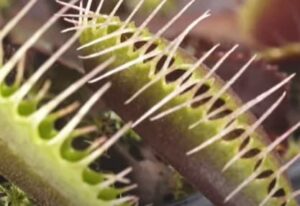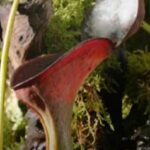As an Amazon Associate, this site earns commissions from qualifying purchases. For more details, click here.
Whether you prefer nepenthes or sarracenia, there is no question that pitcher plants are fascinating. Their colorful leaves and of course feeding mechanism make them solid additions to any home. Once you have grown one it is natural to wonder, how long will pitcher plants live, and how do you extend its lifespan as long as possible?
Pitcher plants have an average lifespan of 10-20 years. Each trap or pitcher can last for 8-12 months, but the plant itself will live for several years with proper soil, light, water and nutrition.
How to Make Pitcher Plants Live Longer
The most common pitcher plants are nepenthes and sarracenia. While there are several variants, the average lifespan is still the same. How long the plant can live depends a lot on its environment.
Keep in mind though those are only averages. Some pitcher plants have been known to last more than20 years. Most of its traps or pitchers live for 8 months but with proper care can last for a year or more.
The simplest way to make pitcher plants live longer is to grow one that is native to your area. The fewer adjustments the plant has to make to its new environment, the better. This will allow it to focus on growth and production of traps.
As you might have guessed, proper care makes the differences between a short and long lived pitcher plant. The environment plays a critical role in this, so you have to make sure it is as conducive to pitcher plant growth as possible.
How Soil Affects Pitcher Plant Lifespan
Both nepenthes and sarracenia pitcher plants have a reputation for being hard to grow (it is not), but all it takes is the right approach. This is especially true for the soil.
Pitcher plants grow in nutrient-free soil mixtures like 1:1 sphagnum moss and silica sand or 1:1 peat moss and perlite. Orchid bark may be substituted for sphagnum moss. The mix ratio can be adjusted to 2:1 depending on your preference.
You can make things easier by buying carnivorous soil that is already mixed so you can use it right away. A good example of this is Organic Earth Soil Mix
There are two things you have to remember about carnivorous plant soil:
The soil should be airy, moist and light. Some nepenthes plants do well in wet but most will not tolerate soggy soil. Too much water can lead to root rot and severely damage the plant.
The soil must be free from nutrition. Planting nepenthes or sarracenia in rich soil will shorten their lifespan. Pitcher plants eat insects to get the nutrition they need. Nitrogen, phosphorus and other elements must not be in the soil, it is fatal to these plants.
Pitcher plant pot size. A 5 inch pot is sufficient for small pitcher plants, while larger species need 7-10 inch containers. Ceramic, plastic and wood with drain holes are the best materials.
Water
You can water pitcher plants from the top. Sprinkle just enough to keep the soil moist without drenching the leaves. Too little water is bad for the plant, but too much should be avoided.
Nepenthes do not thrive in waterlogged conditions, so the tray method does not work here. You cannot keep them in a bog garden either unlike sundews. Just water it as you would regular houseplants.
Use only purified water on pitcher plants. Reverse osmosis and rainwater are fine too. You want the environment to be as close to natural as possible so rainwater is the best choice. Unless you can collect rainwater regularly, it is difficult however. Purified water will do nicely here.
Do not use tap water on pitcher plants. It can cause long term damage and shorten the plant life cycle. Stick to the water types above. Do not allow water to stagnate in the pot. Place the pot on a dish and remove water as it flows out.
Light and Location
Aside from soil and water, pitcher plants need light to survive and thrive. Without it the plant will perish. With inadequate light, pitcher plants will live, but only for a short while. Sufficient lighting is required for these plants to live for years.
Pitcher plants need at least 6-8 hours of light. Sarracenia prefer strong, direct light while nepenthe pitcher plants thrive in partial and direct light.
Where you place pitcher plants determines how much light they receive. Let us look at the various options.
Outdoors. Sarracenia pitcher plants require lots of light. Find the sunniest spot in your garden. An open area is preferable so the plant can find prey as well. You can leave the plant there unless it gets too cold or the temperature goes over 100 F.
Indoors. The best option is a sunny windowsill. This will only work if enough sunlight gets in. Sarracenia might not receive enough light which will affect its long term prospect. Even nepenthes will deteriorate without enough lighting.
Use grow lights if you want to raise pitcher plants indoors. Sunlight coming from the window may not be enough, but adding fluorescent light will help.
Choose a cool white bulb and turn it on several hours daily. Keep it a few inches from the plant. You can use other types of artificial lights but most plant growers find T5 fluorescent to be the most efficient. We suggest Durolux HD T5 Grow Lights because it provides the kind of light these plants prefer.
Temperature and Humidity Guide
The ideal temperature for pitcher plants is 65-85 F (18-30 C). Some species can handle 60 F and up to 90 F, but 65-85 F is the best range. Humidity should be around 60%.
Some pitcher plants lie n rafflesiana are more sensitive to temperature swings than others. But most will be fine even if the thermometer is a few degrees higher or lower. Some pointers to keep in mind though.
- Most pitcher plants grow in North Carolina and the southeastern United States. If you live in this region or nearby, temperature and humidity will not be an issue.
- if you live elsewhere in the US, the weather might be very different. First, check where your pitcher plant is native to, and find out the temperature and humidity there. Try to match that as well as you can.
- You can grow nepenthes plants in a terrarium or greenhouse. This will help maintain humidity at a consistent level. But it might get too hot in the container.
You can use a humidifier for indoor pitcher plants. If the plant is native to your region you can grow it outdoors safely. The plant will handle the light and temperature just fine. In fact it will probably benefit more being outdoors in the long run.
You should grow pitcher plants indoors if the outdoor environment is too different from its native habitat. Indoors you can provide light and control the humidity.
Nutrition and Feeding Tips
Feeding is crucial to pitcher plants. Not only is it necessary for growth, but it makes the difference between how long or how short the plant will live.
Pitcher plants have to eat at least once a month. If they feed once a week that is better. Do not overfeed the pitcher because it will do more harm than good.
Plants need nitrogen which is usually obtained from the ground. But pitcher plants only grow in nutrition deprived soil.
Without nitrogen pitcher plants will not survive. So nepenthes, sarracenia and other carnivorous plants developed traps to catch insects. Flies, moths, gnats and other bugs contain nitrogen, supplying the plants with the nutrition they need.
Some tips for feeding pitcher plants. These are applicable for any variant.
- You can give almost any insect to pitcher plants including nepenthes x ventrata. Small bugs are preferable as they are easier to digest.
- Overfeeding pitcher plants will not make them live longer. Digesting food requires a lot of energy and constant eating will wear them out.
- Pitcher plants can only eat if there is liquid in the cupped leaves. The pitcher rim must be slippery so insects will fall directly into the trap. If the pitcher plant is dry, it needs more light.
Conclusion
Pitcher plants are not hard to grow as long as you understand their needs. By knowing and learning as much as you can about the plant, you can ensure it lives as long as possible.

My fascination with carnivorous plants began many, many years ago with Venus Fly Traps. Now I am more than happy to impart what I know with other enthusiasts and those who are curious about meat eating plants.



